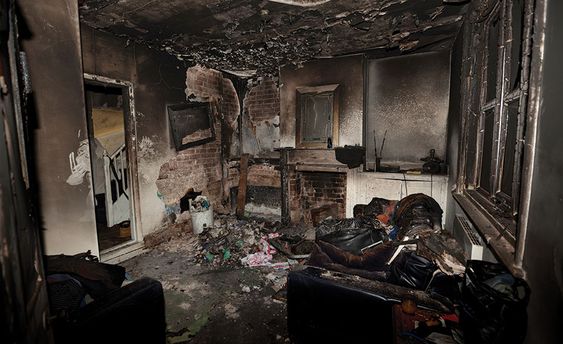
Smoke odor is a distinctive smell that can linger in indoor spaces due to various sources. Let’s delve into the details:
Types of Smoke Odor:
Cigarette Smoke Odor: This type of odor results from smoking tobacco products indoors. It leaves a stale and lingering smell that tends to adhere to surfaces over time.
Fire Smoke Odor: When a house catches fire, the resulting smoke can travel throughout the property. Fire smoke produces a pungent, acrid odor that is challenging to remove. Smoke particles are tiny and can easily penetrate porous surfaces such as walls, furniture, carpets, and HVAC systems.
- Safety Precautions:
Before attempting smoke odor removal, prioritize safety:
Ventilation: Open windows and use fans to circulate fresh air.
Protective Gear: Wear rubber gloves, safety glasses, and a respirator mask to avoid exposure to harmful particles and chemicals during the cleaning process.
Sealing Off Unburned Areas: Ensure areas unaffected by fire are sealed off to prevent the smoke smell from spreading.

Methods for Smoke Odor Removal:
Deep Cleaning: –
Surface Cleaning: Scrub walls, ceilings, floors, and countertops using specialized cleaning agents designed to neutralize odors and remove soot residue.
HVAC System Cleaning: Smoke particles often infiltrate HVAC systems. Clean or replace filters and consider professional cleaning.
Carpet and Upholstery Treatment: Use appropriate methods to address smoke-affected fabrics.
Professional Techniques: –
Initial Assessment: Evaluate the extent of smoke damage.
Ventilation: Use fans or industrial-grade air movers to improve air circulation.
Ozone Treatment: Ozone generators can help neutralize odors.
Air Purification: Employ air purifiers to remove airborne smoke particles.
Follow-Up Inspections: Regularly assess progress and address any remaining odor.
Home Remedies: –
Baking Soda: Place bowls of baking soda around the house to absorb odors.
Vinegar Wash: Wipe surfaces with a vinegar solution to neutralize smoke smells.
Activated Charcoal: Use bags or bowls of activated charcoal to absorb odors.
Steam Cleaning: Steam can help eliminate smoke smells.
Dehumidifier: Reducing humidity can improve air quality.
Air Purifier: Invest in an air purifier for ongoing odor control.
HVAC Air Filter Maintenance: Regularly change air filters to prevent recirculation of odors.
Professional Restoration Techniques: –
Thermal Fogging: Releases deodorizing agents into the air.
Ozone Generators: Produce ozone to neutralize odors.
Hydroxyl Generators: Generate hydroxyl radicals to break down odorous compounds.
Remember, smoke odor removal may require a combination of methods, and persistence is key to achieving a fresh-smelling environment. 🌬️🏠



 PuroClean of San Clemente
PuroClean of San Clemente